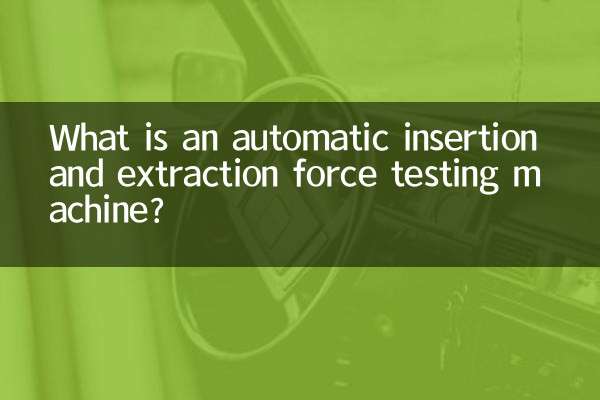What is a seat belt tension testing machine?
In fields such as industrial production, construction engineering, and automobile manufacturing, the safety performance of seat belts is crucial. In order to ensure that the seat belt can effectively protect the user's safety at critical moments, the seat belt tension testing machine came into being. This article will introduce in detail the definition, use, working principle and related technical parameters of the seat belt tensile testing machine to help you fully understand this important equipment.
1. Definition of safety belt tension testing machine

Seat belt tension testing machine is a testing equipment specially used to test the mechanical properties of seat belts and related materials such as stretching, tearing, and peeling. It scientifically evaluates the strength, durability and reliability of seat belts by simulating the force conditions in actual use to ensure that they comply with relevant industry standards and safety requirements.
2. Main uses of seat belt tension testing machine
Seat belt tension testing machines are widely used in the following fields:
| Application areas | Specific use |
|---|---|
| automobile manufacturing | Test the tensile strength and durability of car seat belts in emergency situations |
| construction project | Evaluate the safety performance of safety belts for working at heights |
| industrial production | Testing the material strength and structural stability of industrial safety belts |
| Scientific research institutions | Studying the mechanical properties of new seat belt materials |
3. Working principle of seat belt tension testing machine
The seat belt tension testing machine generates tension through a motor drive or hydraulic system, fixes the seat belt on the fixture, and applies gradually increasing tension until the seat belt breaks or reaches a preset tension value. During this process, the equipment will record tensile force value, displacement and other data in real time, and generate a test report through software analysis.
4. Technical parameters of seat belt tension testing machine
The following are the main technical parameters of common seat belt tension testing machines:
| Parameter name | Parameter range |
|---|---|
| Maximum testing force | 10kN-200kN |
| Test speed | 1-500mm/min |
| Displacement accuracy | ±0.5% |
| Force accuracy | ±1% |
| test space | 600-1000mm |
| Supply voltage | 220V/380V |
5. Suggestions for purchasing seat belt tension testing machine
When purchasing a seat belt tension testing machine, you need to consider the following factors:
1.Testing requirements: Select equipment with appropriate range and accuracy based on actual testing needs.
2.Brand reputation: Choose well-known brands to ensure equipment quality and after-sales service.
3.Extended functions: Consider whether you need multi-language interface, data export and other functions.
4.budget: On the premise of meeting the needs, choose equipment with high cost performance.
6. Maintenance of seat belt tension testing machine
In order to ensure the long-term stable operation of the seat belt tension testing machine, the following maintenance work needs to be carried out regularly:
| maintenance items | Maintenance cycle |
|---|---|
| Clean equipment surfaces | daily |
| Check fixture status | weekly |
| Lubricate moving parts | monthly |
| Calibrate sensor | every six months |
| Comprehensive overhaul | every year |
7. Conclusion
As an important testing equipment to ensure the safety performance of seat belts, seat belt tension testing machines play an irreplaceable role in all walks of life. By understanding its working principle and technical parameters, users can better select and use the equipment, providing strong support for ensuring the quality and safety performance of seat belts. With the continuous development of technology, seat belt tension testing machines will also continue to progress in the direction of intelligence and high precision.

check the details

check the details